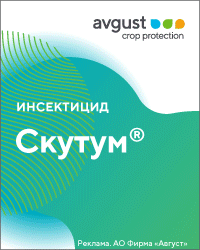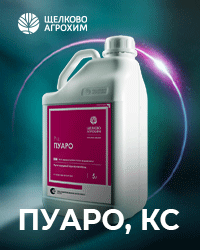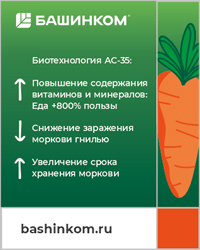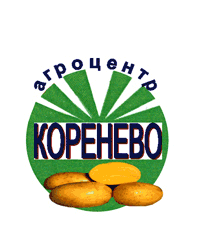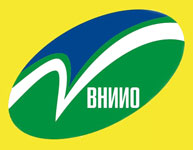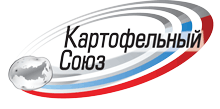UDC 664.8.047: 635.356
https://doi.org/10.25630/PAV.2025.35.96.003
Yanchenko E.V., Ivanova M.I., Kaukhcheshvili N.E., Gryzunov A.A., Virchenko I.I., Kornev A.V., Borzov S.S.
In our time, we need new sources of food with special nutraceutical properties that can be easily consumed by humans. Broccoli is considered a promising raw material for the production of semi-finished products, as it is a valuable source of fiber, vitamins, minerals, and other bioactive compounds. The period of consumption of fresh broccoli products is very short. Dried products can be stored for a long time without deteriorating their quality. The aim of our study was to determine the effect of three different dehydration methods (convective drying - KD, vacuum freeze-drying - VFD and low-temperature vacuum drying - LVD) on the nutritional value and organoleptic characteristics of dry powders from modern broccoli hybrids of domestic and foreign breeding. The objects of the study were dry powders from 8 modern broccoli hybrids (4 domestic and 4 foreign), obtained by different types of drying: KD, VFD and LVD. Research of raw materials and dry powder was carried out using generally accepted methods. During the study, domestic broccoli hybrids Detskiy Delikates and Fortuna were selected for various dehydration methods. Domestic broccoli hybrids Detskiy Delikates and Fortuna exceeded foreign ones in terms of organoleptic characteristics and vitamin C content in the finished product. NVS preserved vitamin C better than other types of drying. The vitamin C content in the finished product was closely correlated with the vitamin C content in the raw material for all types of drying. Broccoli powder from domestic hybrids Detskiy Delikates and Fortuna, obtained by NVS, can be recommended as a dietary food, as a source of biologically active substances. When choosing the type of drying, the main focus was on ensuring the quality of the product. A possible direction for further research could be to reduce production costs when choosing the type of drying.
Key words: broccoli, convective drying, freeze-drying vacuum drying, low-temperature vacuum drying, powder, vitamin C
- Diversity characterisation of broccoli (Brassica oleracea L. var. italica Plenck) landraces for their on-farm (in situ) safeguard and use in breeding programs. S. Ciancaleoni, G.L. Chiarenza, L. Raggi, F. Branca, V. Negri. 2014. Genetic Resources and Crop Evolution. No61. Pp. 451–464. https://doi.org/10.1007/s10722-013-0049-2
- Drying kinetics and quality parameters of pumpkin slices dehydrated using di_erent methods. A. Nawirska; A. Figiel; A.Z. Kucharska; A. Sokół-Łetowska, A. Biesiada. J. Food Eng. 2009. Vol. 94. Pp. 14–20. https://doi.org/10.1016/j.jfoodeng.2009.02.025
- Sagar V.R., Kumar P.S. Recent advances in drying and dehydration of fruits and vegetables: A review. J. Food Sci. Technol. 2010. Vol. 47. Pp. 15–26. https://doi.org/10.1007/s13197-010-0010-8
- Zhang D., Hamauzu Y. Phenolics, ascorbic acid, carotenoids and antioxidant activity of broccoli and their changes during conventional and microwave cooking. Food Chem. 2004. Vol. 88. Pp. 503–509. https://doi.org/10.1016/j.foodchem.2004.01.065
- Investigation of the chemical composition of broccoli cabbage powder as a raw material for the production of functional food. T.I. Kryachko, V.D. Malkina, V.V. Martirosyan, S.A. Smirnova, N.A. Golubkina, L.L. Bondareva. Food Technology. 2019. Vol 1(367). Pp. 22–26. DOI 10.26297/0579-3009.2019.1.5. EDN YZILLN. (In Russ.).
- Dry fermented vegetable products of long-term storage and their integration into the diet of astronauts. E.V. Yanchenko, K.A. Zykin, N.E. Kaukhcheshvili, A.A. Gryzunov. Vegetable crops of Russia. 2024. No2. Pp. 27–36. (In Russ.) https://doi.org/10.18619/2072-9146-2024-2-27-36
- Experimental Research of Sublimation Drying. Universum. M.M.U. Aripov, U.R. Kadirov, Sh.M. Mamatov, S.M. Turabdzhanov. Technical Sciences. 2019. No9(66). [Web resource] URL: https://cyberleninka.ru/article/n/eksperimentalnye-issledovaniya-sublimatsionnoy-sushki (accessed: 08.09.2025) (In Russ.).
- Semenov G.V., Krasnova I.S. Sublimation Drying. Moscow. DeLi Trading House LLC, 2021. 326 p. (In Russ.).
- Patent No2773934 C1, Russian Federation, IPC A23L 3/01, A23L 3/40, F26B 3/347. Method and device for low-temperature vacuum drying of crushed animal and plant products: No2021124331: applied for on 17.08.2021: published on 14.06.2022. N.Je. Kauhcheshvili, A.A. Gryzunov, S.S. Borzov, A.V. Strokov; applicant: Federal State Budgetary Scientific Institution «Federal Scientific Center of Food Systems named after V.M. Gorbatov» of the Russian Academy of Sciences. EDN OEIABV. (In Russ.).
- Borzov S.S., Kauhcheshvili N.Je. Comparison of the effect of dehydration of food products by freeze-drying and low-temperature vacuum drying on the quality of a dry product. Energy–efficient engineering systems: Proceedings of international scientific and technical conferences, St. Petersburg, May 25. November 17, 2023. St. Petersburg: ITMO National Research University, 2024. Pp. 252–253. EDN BCPODW. (In Russ.).
PDF(Rus)
For citing: Comparative evaluation of modern broccoli hybrids as raw materials for various types of drying. E.V. Yanchenko, M.I. Ivanova, N.E. Kaukhcheshvili, A.A. Gryzunov, I.I. Virchenko, A.V. Kornev, S.S. Borzov. Potato and vegetables. 2025. No7. Pp. 32-36. https://doi.org/10.25630/PAV.2025.35.96.003 (In Russ.).

